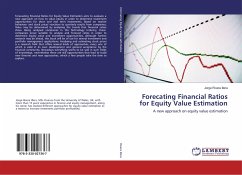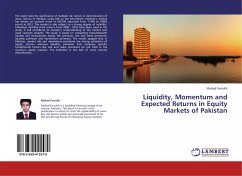Hoffmann (2014)[1] proposes a measure of entrepreneurial distress (cpy) and finds that the correlation between this distress factor and the expected stock returns in the U.S. weakens after the banking deregulation in the 1980's. One explanation for this pattern goes as follows: the financial liberalisation in the U.S. has led to better access to credit, which lowers the risk for entrepreneurs to liquidate their portfolio in bad times, which leads to lower business cycle variations in entrepreneurial risk captured by this cpy measure. An obvious extension of this framework is to examine wether the pattern described above holds if this distress factor is used to price the cross-section of assets. This book shall investigate this hypothesis. The analysis builds on Hoffmann (2014)[1] and Lettau and Ludvigson (2001)[2].
Bitte wählen Sie Ihr Anliegen aus.
Rechnungen
Retourenschein anfordern
Bestellstatus
Storno








